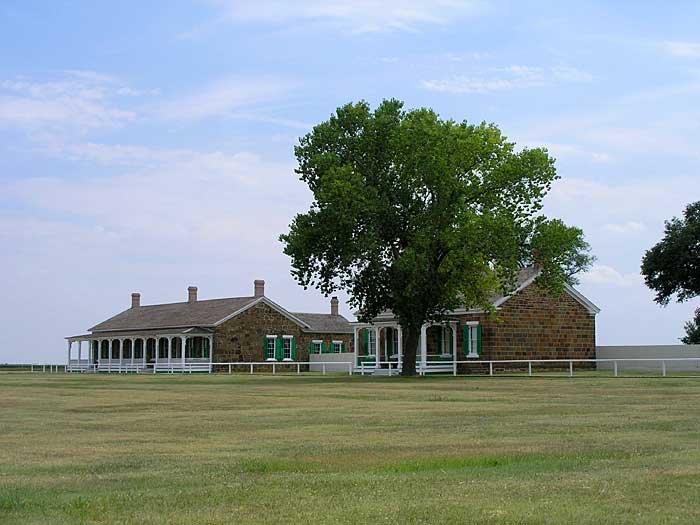 Email: ted@phelpscorner.com
|
 Email: ted@phelpscorner.com
|

July 9: From 1866 to 1868 the sod and adobe structures at Fort Larned were replaced by the sandstone buildings that survive today. Henry M. Stanley, later well known for his rescue of David Livingstone in Africa, wrote after his second visit to Fort Larned in October 1867, "a complete change has been effected at Fort Larned . . . . The shabby, vermin-breeding adobe and wooden houses have been torn down, and new and stately buildings of hewn sandstone stand in their stead." When compared to many of the other frontier posts in the late 1860s and 1870s, Fort Larned was an impressive military complex. By 1871 escorts were not needed for wagon trains using the Santa Fe Trail. However, survey and construction crews of the Atchson, Topeka and Santa Fe Railroad were given protection. The road of iron rails, with its cheaper and faster transportation, quickly replaced the wagon road of dust and mud. By the end of 1872 the Santa Fe Railroad had pushed all the way across Kansas. With the military importance of Fort Larned gone, the post was abandoned on July 13, 1878, except for a small guard force to protect the buildings. On March 26, 1883, the Fort Larned Military Reservation was transferred from the War Department to the General Land Office, Department of the Interior. The buildings and land were sold at public auction in 1884.
Photo album created with Web Album Generator